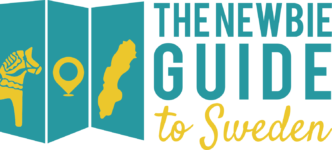Written by Hayu Hamemayu
Lately, I’ve been receiving questions from some people who are going to move to Sweden, either for work or study in my website and Instagram. And some of the questions are actually really simple, about everyday info, which I didn’t consider important before. At least I used to take it for granted.
But I think that was just because I’m lucky. My husband moved to Sweden eight months earlier than I did so he’s kind of paves the path for me. But not all people have the same experience. So here I compile the basic information of everyday life in Sweden for recently moved newbie.
Post & Delivery
If you come from a country where you receive your post (no matter big or small) in your front door, I can assure you that it’s not going to happen in Sweden. Unless, you select the home delivery option when ordering something but this is not always available.
Most of the times, you will receive your post in the mailbox. Or if it’s too big, you will need to retrieve it from the closest pick up point based on your postcode. They will send notification to your phone, email, or sometimes leave a note in your mailbox, when the package is ready to be picked up. This pick up point is normally grocery store like ICA, Willys or other shops, depending on the courier service you choose.
The main operator in Sweden is PostNord, the other common delivery services are DHL and DB Schenker. For home delivery, there are Budbee, Best Transport, Airmee to name a few.
What if the package is really big?
Still, you need to pick it up by yourself. Therefore, it’s a good idea to download the PostNord app as it can help you to track the delivery process as well as give you the measurement so you’ll know the best way to bring your order home.
Laundry
Most housing in Sweden use communal laundry room. It is very rare to have a personal washing machine if you live in apartment. The laundry room in Sweden is usually located in the basement and is not using coin.
Instead, it’s using key and booking system, either manual or online, which means, only those who live in the housing complex have access to it.
If the system is manual, you book the time slot (around 4-6 hours) in the board near the laundry room. You move the key with your apartment number to the day and time you prefer on the board. For the online system, you can book via the housing provider websites.
In the laundry room you will find washing machine, tumble dryer, drying room, and sometimes a passive aggressive note to those who don’t clean the room afterwards 😀 .
Again, it’s a communal laundry room so every user is expected to take a good care of it. And apparently, it’s very Swedish to leave an anonymous letter in the laundry room if you’re not happy with your fellow neighbour’s behaviour.
You will need to bring your own detergent but some housings use automatic machines so the detergent has already in it. Just check the information from the housing caretaker (bovärd).
Room & furniture
In Sweden, 3 rooms apartment means an apartment with 2 bedrooms. Unless it’s specifically stated, the word “room” apply for living room as well so make sure you check out the number of bedrooms before renting or buying an apartment. As for the kitchen, even if it says unfurnished, it has already a stove and a fridge. But, don’t forget to buy lamps because they are not included in unfurnished apartment.
Money & Payment
Sweden is a cashless country so the most commonly used payment methods here are card, Swish and Klarna. As far as I know, any credit card with Visa or MasterCard logo can be used here. Swish is an app connected to your bank account and phone number. You will need another app called Bank ID to be able to use Swish (contact your bank provider to help you with the set up). Klarna is an online payment option that gives you flexibility to pay. You can get the item first and pay later (within 14 days with no extra charge), pay the next month with extra charge or pay with instalments.
If you really need cash, you can withdraw money from the ATM or better known here as Bankomat. It’s jointly owned by the five largest banks in Sweden – Danske Bank, Handelsbanken, Nordea, SEB, Swedbank and offer services to all card issuers, either as a customer or via the VISA and MasterCard networks.
Food
Thanks to globalisation, we have quite plenty option here in Sweden: Jasmine rice, Indian spices, Middle East herbs, Chinese tea, Japanese noodle, and so on. They may not taste exactly the same (due to a long storage in the cargo I assume) and most definitely not cost the same 😀 , but it’s still good if you’re missing a bit flavour of home.
Hayu Hamemayu is a Lund-based freelance writer whose work has appeared in The Jakarta Post, Media Indonesia, Kompas, Majalah Kartini, and Indonesia Travel Magazine among others. A traveller mommy by nature and random thinker by inclination, she keeps memories in her Instagram @hayuhamemayu and writes her everyday stories in her blog.


Leave a Reply